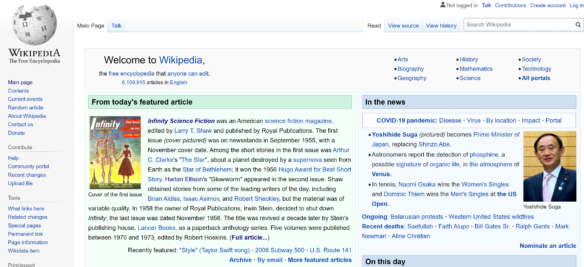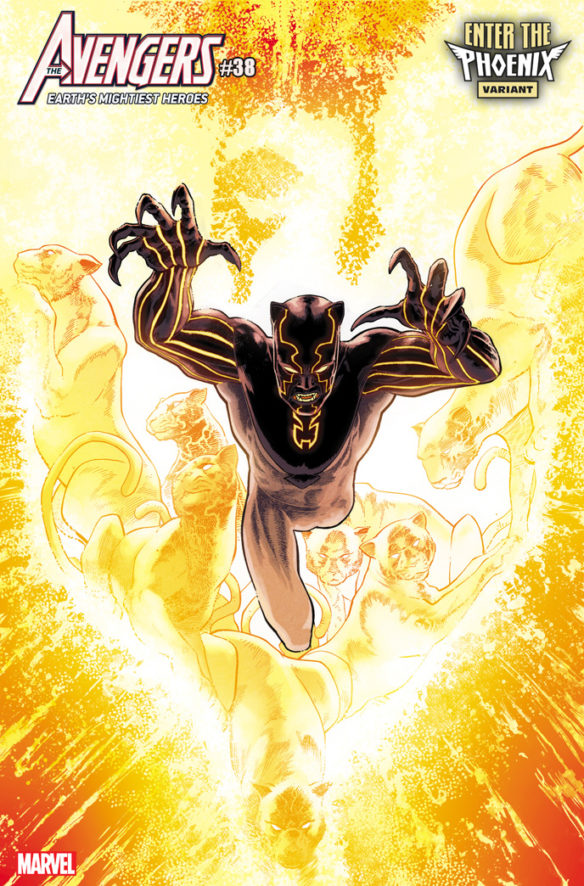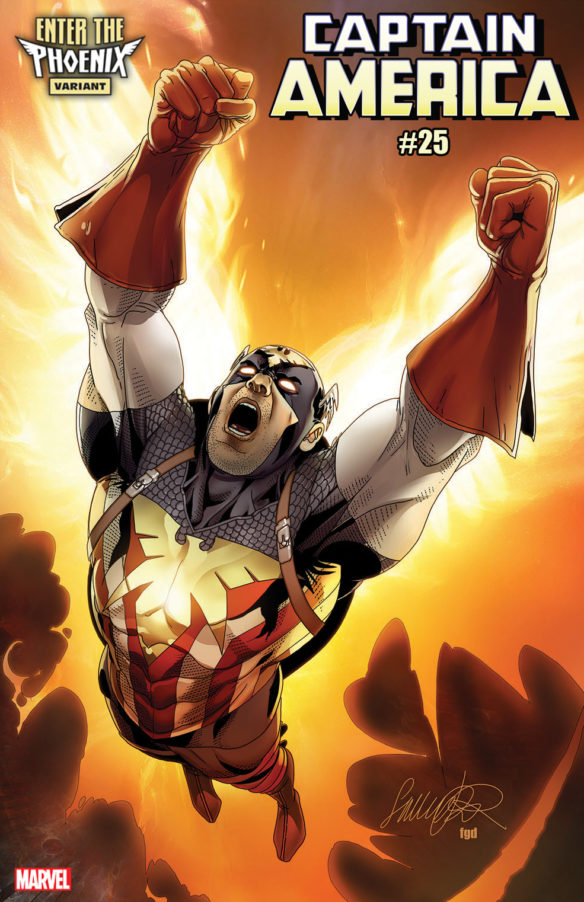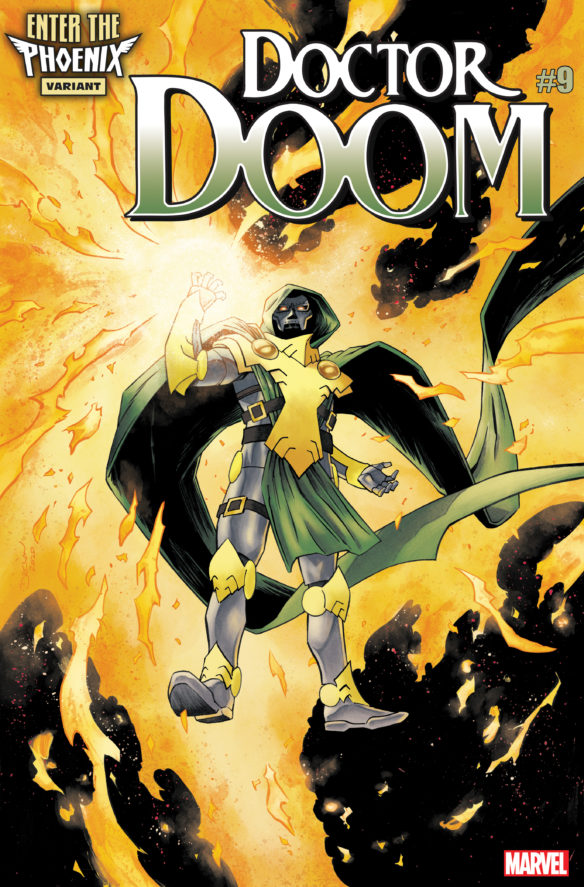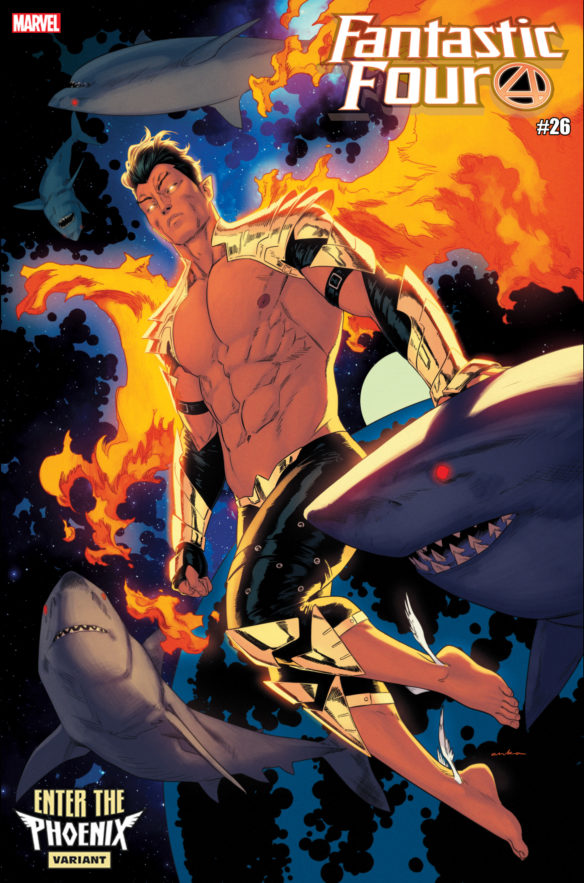(1) CARRYING OUT THEIR LAST WISHES. J. Michael Straczynski posted on Facebook today about his all-consuming role as executor for Harlan and Susan Ellison.
… “How do YOU know what the deal is, huh? My guy talked to the executor just yesterday, who told him this straight-up. How do YOU know better than HE does?”
How do I know better? How do I know these are just rumors?
Because I am the Executor of the Harlan and Susan Ellison Trust.
I’ve kept a low profile since accepting this position in order to focus on of the million-and-one details that have to be addressed. I don’t know if anyone reading this has ever been appointed an executor, but it is a massive undertaking. To be an executor is to inherit nothing but be responsible for everything, and to implement the last wishes of those who entrusted you with the totality of their life’s work.
Consequently, ever since Susan’s passing, 80% of my day, every day, has gone into establishing the Trust, dealing with tax issues, creditors, court documents, lawyers, accountants, affidavits, death certificates, corporate minutes…in simpler cases, the process only takes a few months, and usually ends by parceling out bequests or auctioning off the estate.
But that is not the case here, because there is the legacy of Harlan’s work that must be preserved and enhanced. Looking after all this, and seeing to Harlan and Susan’s wishes, is something I will likely be doing for the rest of my life.
Everything that Harlan ever owned, did or wrote will be fiercely protected. Steps are being taken to certify Ellison Wonderland as a cultural landmark, ensuring that it will remain just as it is long after I have gone to dust.
To revive interest in his prose, literary representation has been shifted to Janklow & Nesbit, one of the largest and most prestigious literary agencies in the world. Film and TV rights will be handled through A3, previously known as the Abrams Agency, also a leading and influential agency. I will be working hand in glove with them to get Harlan’s work back into print in a big way.
There is more to say on future plans – much more – but all of that will come in time….
(2) WORD MAGIC. NPR’s Jessica P. Wick promises that Alix E. Harrow’s “‘The Once And Future Witches’ Will Have You Spellbound”.
…Harrow likes a secret society in the best way, and Witches is riddled with secrets, honeycombed with groups working toward overlapping or opposing goals. The Sisters engage in imaginative skulduggery, scrounging plans from overlooked skills and ignored know-how. She also likes an uprising, and here, where witchery and sickness both run deep as water under a layer of oil, that’s heady stuff. We all (I hope) agree women getting the vote was long overdue. Framing the reclamation of magic and power against that real-world struggle, which we know turned out a certain way, feels particularly apt to themes of once and future, poignant to the powerlessness many feel this year.
I adored watching characters as their expectations were subverted, as their understanding of their world expanded. Harrow revels in many-layered mysteries, in a story of many acts, in wordplay….
(3) MAUS ARTIST. The Guardian’s Sam Leith interviews “Graphic artist Art Spiegelman on Maus, politics and ‘drawing badly'”.
…Spiegelman’s success had the disconcerting effect of placing an artist who had been happy in the comix-with-an-x underground – a lysergic disciple of R Crumb – very firmly in the literary establishment. He became a staple of Tina Brown’s New Yorker, a darling of academics, and came to be regarded by many, not without resentment, as a sort of capo of the US comics scene.
“I remember when I first got this Pulitzer prize I thought it was a prank call,” he says, “But immediately after I got back to New York, I got an urgent call from a wonderful cartoonist and friend, Jules Feiffer: ‘We have to meet immediately. Can you come out and have a coffee?’ And we met. He said: ‘You have to understand what you’ve just got. It’s either a licence to kill, or something that will kill you.’”
That comics are now considered “respectable” – thanks in part to Maus – is something Spiegelman never quite looked for. But he acknowledges it has its advantages. “I’m astounded by how things have changed. And I would say I might have been dishonest or disingenuous when I said I wasn’t interested in it being respectable. I love the medium. And I love what was done in it from the 19th century to now. But I know that on some level, I want it to be able to not have to make everything have a joke, or an escapist adventure story.”
His rocket launch into canonicity was both “liberating and also incredibly confining – trying to find places to go where I wouldn’t have to be the Elie Wiesel of comic books”. Even at the time, Spiegelman seems to have been conscious that Maus would be in danger of defining him. The next project he took on was illustrating Moncure March’s jazz-age poem The Wild Party for a small press: “This was going to be a kind of polar opposite [to Maus]: decorative, erotic, frivolous in many ways and involved with the pleasures of making; although it didn’t turn out to be so pleasurable in its third year. Every project I start turns into a coffin.”
(4) MAKE IT SO. “‘I Longed To See Something Different, So I Wrote It’: Questions For Rebecca Roanhorse” at NPR.
… In an email interview, Roanhorse tells me that’s something she’s always wanted to write about. “I have been reading epic fantasies inspired by European settings since I was a child, and while I’m still a fan of many of these works, I longed to see something different,” she says. “So I wrote it. I never made a conscious decision to go in that direction. That direction was simply the natural culmination of my love of the architecture, poetry, politics, and history of these places and people that I’ve been learning about forever.”
(5) IN MEMORY NOT GREEN. The actress says it ain’t so: “Tatiana Maslany Refutes She-Hulk Casting Report: Lead Role In Disney+ Series ‘Not Actually A Thing” at SYFY Wire.
Previous reports that Tatiana Maslany was getting ready to go green may have been premature. The Canadian-born Orphan Black star recently told an Ontario newspaper that she’s not been cast, after all, as the star of Marvel’s upcoming She-Hulk series at Disney+.
Speaking with the The Sudbury Star this week, Maslany tapped the brakes on all the She-Hulk hype, saying she’s “unfortunately” not currently tied to the series. First reported by Variety in September, word quickly spread that Marvel had tapped Maslany to play Jennifer Walters (aka She-Hulk), the comics-based cousin of Bruce Banner.
(6) GAME FACE. Ty Schalter’s “Personal Canons: Ender’s Game” is the latest guest post in Sarah Gailey’s Personal Canons series.
…So why, then, am I putting on my cape and riding out for this book as one that Everyone Must Read?
It’s not just because it remains a beautiful piece of art. Neither is it just because many other great books Card wrote have been silenced by his own inability to let them speak for themselves. Nor is it just because Ender’s Game deserves to be snatched from the canonical pyre and preserved for future generations.
It’s because Ender’s Game is a warning.
It’s a warning to privileged kids like me, who believe they know better than everyone else, when they don’t know how to turn in their homework on time. It’s a warning to everyone who thinks the universe owes them anything, just because of the circumstances of their birth. It’s a warning to a society that will stop at nothing to put itself first, even if that means perverting everything it’s supposed to stand for. Most of all, it’s a warning to authors, to readers, to writers, to the SFF community.
Yes, it’s possible to build a future where everyone can thrive together. Where our stories and our lives are enriched by the diversity of our voices, experiences, myths, cultures, and canons. Where the stories we tell light the way for all of humanity.
But the moral arc of the universe doesn’t bend toward justice by default. It requires constant, collective work with hammer and tongs. It requires pain, exhaustion, sacrifice by those who are able on behalf of those who aren’t. It requires humble reflection on everything we’ve ever done and choosing to do the right thing now, again and again, no matter how badly (or how often) we’ve screwed up. It is the journey of a lifetime, or many lifetimes.
(7) THE LIGHTHEARTEDNESS OF OTHER DAYS. James Wallace Harris surveys the field in “Poking Fun at Science Fiction”, but confesses, “My problem is sarcasm, satire, and subtle jabs go right over my head (my lady friends take advantage of this).”
…Study that Emsh (Ed Emshwiller) painting above. At first I thought it a clever way to suggest action – a woman had been abducted from a space colony. But then I thought of something, and it became funny, But how could it possibly comic? Obviously a woman has been kidnapped by an alien on a colony world – that’s tragic. But if you know the history of science fiction magazines, and the cliches about covers with BEMs carrying off a scantily clad women, then you might think Emsh is playing around. In case you don’t know the lingo, BEM stands for bug eyed monster. Sex sells, even for science fiction magazines. Why did Emsh leave off the sexy woman and lower the sales of that issue? Because we expected a naked woman he thought might be funny to disappoint us. Sure, the painting is of a serious action scene, a man is running to rescue a woman. Maybe even the editor told him, “No babes.” But I like to think Emsh is also poking fun at science fiction (See the section below, Sex, Nudity, and Prudity in Science Fiction.)
(8) FLEMING OBIT. Actress Rhonda Fleming died October 14. The New York Times paid tribute: “Rhonda Fleming, 97, Movie Star Made for Technicolor, Is Dead”. Here’s a brief excerpt concerning her genre connections.
Rhonda Fleming, the red-haired actress who became a popular sex symbol in Hollywood westerns, film noir and adventure movies of the 1940s and ’50s, died on Wednesday in Santa Monica, Calif. She was 97.
Ms. Fleming’s roles included those of a beautiful Arthurian princess in the Bing Crosby musical version of Mark Twain’s novel “A Connecticut Yankee in King Arthur’s Court” (1949).
… Ms. Fleming’s … last film was “The Nude Bomb,” a 1980 spy comedy based on the 1960s sitcom “Get Smart,” in which she played Edith Von Secondberg, an international fashion designer.
In a 1993 interview with The Toronto Star, relaxing at her California home with Mr. Mann, she said, “My husband recently asked me if I’d seen any movie I wanted to appear in.” She went straight for a specific role. “I said yes, the dinosaur in ‘Jurassic Park.’”
(9) MEDIA ANNIVERSARY.
- 1980 — Forty years ago at Noreascon Two, Alien would win the Hugo for Best Dramatic Presentation. It was directed by Ridley Scott from the screenplay by Dan O’Bannon off the story by O’Bannon and Ronald Shusett. This would the second Hugo nomination form O’Bannon who was nominated earlier at MidAmeriCon for Dark Star. He’d would win his second Hugo several years later for Aliens at Conspiracy ’87, and be later nominated at Chicon V for Total Recall and Alien 3 at ConFrancisco. A half million audience reviewers at Rotten Tomatoes give it a horrifyingly great ninety-four percent rating.

(10) TODAY’S BIRTHDAYS.
[Compiled by Cat Eldridge and John Hertz.]
- Born October 17, 1856 – Jane Barlow. Knew French & German; classical scholar; pianist. D.Litt. from Univ. Dublin. A score of books; Irish Idylls went into nine editions. For us The End of Elfintown book-length poem; translation of The Battle of Frogs and Mice, title page here; under another name, A Strange Land. (Died 1917) [JH]
- Born October 17, 1917 — Marsha Hunt, 103. Performer who appeared in both the original versions of the Twilight Zone and the Outer Limits, also appeared in Star Trek: The Next Generation, Shadow Chasers and Fear No Evil. (CE)
- Born October 17, 1934 — Alan Garner, 86. His best book? That’d be Boneland which technically is the sequel to The Weirdstone of Brisingamen and The Moon of Gomrath but really isn’t. Oh, and The Owl Service is amazingly superb! There’s a BBC video series of the latter but I’ve not seen it. (CE)
- Born October 17, 1942 – John Sapienza, Jr., 78. Gamer (six years in Alarums & Excursions), WSFA (Washington, DC, SF Ass’n) stalwart, helpful con-runner (he was at SMOFcon 7; SMOF for “secret masters of fandom” being as Bruce Pelz said a joke-nonjoke-joke; SMOFcon draws people who often do the work at SF conventions and want to do it better; SMOFcon 37 was in 2019), and lawyer, who found himself marrying Peggy Rae Pavlat, which had an effect like Atomic Mouse’s U-235 pills. He was and is quite worthy; I said the only way Peggy Rae could have got more sapience was by marrying him. [JH]
- Born October 17, 1948 – Robert Jordan. Best known for the Wheel of Time series, finished by Brandon Sanderson at RJ’s death. Also Conan the Barbarian books. Under other names, historical fiction, a Western, dance criticism. In the Army earned a Distinguished Flying Cross with oak-leaf cluster, Bronze Star with “V” and oak-leaf cluster, two Vietnamese Gallantry Crosses with palm. His widow continues as an editor. (Died 2007) [JH]
- Born October 17, 1950 – Michael J. Walsh, F.N., 70. Another WSFA stalwart, he chaired ConStellation the 41st Worldcon, three Disclaves including one he couldn’t attend, two Capclaves, Balticon 15, three World Fantasy Conventions. Fan Guest of Honor at Balticon 29, Lunacon 40, Armadillocon 36, World Fantasy Con 2018. Fellow of NESFA (New England SF Ass’n; service award). Publisher, Old Earth Books. Occasional Filer. [JH]
- Born October 17, 1951 – Geraldine Harris, 69. Five novels, two shorter stories; see her Website here. Also children’s books on ancient Egypt. Married name Geraldine Pinch identifies her academic work in Egyptology, from which she says she has retired. [JH]
- Born October 17, 1958 — Jo Fletcher, 62. British editor who, after working for Gollancz for 16 years, founded Jo Fletcher Books in 2011. Interestingly ISFDB says she’s done two World Fantasy Convention souvenir books, Gaslight & Ghosts and Secret City: Strange Tales of London, both with Stephen Jones. She also wrote with him the British Report aka The London Report for Science Fiction Chronicle. (CE)
- Born October 17, 1968 — Mark Gatiss, 52. English actor, screenwriter, director, producer and novelist. Writer for Doctor Who; with Steven Moffat, whom Gatiss worked with on Doctor Who and Jekyll, he also co-created and co-produced Sherlock. As an actor, I’ll noted he does Vogon voices in The Hitchhiker’s Guide to the Galaxy, and is Mycroft Holmes in Sherlock. (CE)
- Born October 17, 1971 — Patrick Ness, 49. Best known for his books for young adults, including the Chaos Walking trilogy and A Monster Calls. He’s also the creator and writer of the Doctor Who spin-off Class series. And he’s written a Doctor Who story, “Tip of the Tongue”, a Fifth Doctor story. (CE)
- Born October 17, 1983 — Felicity Jones, 37. She played Ethel Hallow for one series of The Worst Witch and its sequel Weirdsister College. She’d later be in The Amazing Spider-Man 2 as Felicia Hardy and in Rogue One as Jyn Erso. I’d say her role as balloon pilot Amelia Wren in The Aeronauts is genre adjacent. (CE)
- Born October 17, 1984 – Randall Munroe, 36. Stick-figure cartoons can degenerate into word gags, and the endlessly sour can tire like the sweet, but speaking of endlessness, “Time” in RM’s xkcd won the Best-Graphic-Story Hugo having been updated every thirty minutes 25-30 Mar 2013, then every hour until 26 Jul, in total 3,099 images; he evidently learned Time must have a stop; Huxley did. A teacher of mine said “There’s a sense in which a genius can’t be wrong.” [JH]
(11) COMICS SECTION.
- October 17, 1937 — Huey, Dewey, and Louie (Donald Duck’s nephews) first appeared in a comic strip.
- Bliss suggests the next Harry Potter title.
- A mega-dose of secret history at Saturday Morning Breakfast Cereal.
(12) GRAB AND GO. October 20 will be the day NASA’s OSIRIS-Rex snatches a sample from the asteroid Bennu. Planetary Society has a briefing: “Your Guide to the OSIRIS-REx sample collection”. Click on planetary.org/live for NASA TV coverage starting at 2:00 p.m. PT / 5:00 p.m. ET / 21:00 UTC.
…Collecting a sample from Bennu is no small challenge. The asteroid, which measures 500 meters (a third of a mile) wide, ended up being much rockier than mission designers expected. The sample site is just 16 meters in diameter and surrounded by boulders bigger than OSIRIS-REx itself. The spacecraft must collect its sample without guidance from Earth, since it currently takes nearly 20 minutes for signals to travel between our planet and Bennu at the speed of light.
The entire process takes almost 5 hours. OSIRIS-REx will match Bennu’s 4-hour rotation rate and slowly descend to the surface. To give the spacecraft more room to maneuver, it adjusts itself into a Y-shape, extending its sample arm 3 meters and tilting back its two solar panels. Eventually OSIRIS-REx must turn its high-gain antenna away from Earth, restricting the volume of information ground controllers can receive. The spacecraft figures out where it is by comparing surface views from prior flyovers with real-time camera images. It will back away immediately if it thinks it’s going to crash.
Bennu barely has any gravity, so OSIRIS-REx can’t land. Instead, the spacecraft will high-five Bennu with a cylindrical dinner plate-sized device at the end of its arm called TAGSAM, the Touch-And-Go Sample Acquisition Mechanism. TAGSAM blasts nitrogen gas into the surface, kicking dust and small rocks into a collection chamber that runs around the inside of the device.
OSIRIS-REx won’t overstay its welcome, immediately backing a safe distance away from Bennu. The mission team will take pictures of TAGSAM to verify they got a sample, and later spin the spacecraft to weigh it. If for some reason things go awry, the spacecraft carries enough nitrogen for two more collection attempts. But if everything goes according to plan, OSIRIS-REx will store the sample in a capsule and depart for Earth next year. In September 2023, the capsule will parachute to a landing in Utah.
(13) POSSIBLE BREAKTHROUGH WITH BRAIN INSPIRED COMPUTING. [Item by SF Concatenation’s Jonathan Cowie.] A core trope of science fiction has been ‘artificial intelligence’ (AI) from Arthur Clarke’s HAL 9000 to Philip K. Dick’s replicants. In real life, computer scientists have over-used the term, applying it to things like facial recognition, and so for what SF folk would call AI they call it General Artificial Intelligence (GAI). In addition to the rod to GAI, there is also the problem of Moore’s Law by which computing power of a chip doubles every couple of years: this cannot go on indefinitely and we may reach the limit in a decade or so’s time. Chinese computer scientists from the Centre for Brain-Inspired Computing Research, Tsinghua University, Beijing, have just had a breakthrough that is likely to help address both issues. Their work is rather technical but in essence they have developed a new approach using neural networks. Instead of getting the network to work like a normal computer, they have developed a new computer system hierarchy. In essence, while normal computers have an algorithm described in software which is accurately compiled into an exact equivalent intermediate representation of hardware — a set of instructions that is then run on the hardware, what the computer scientists have done is develop an inexact, approximate way to do this. This overcomes the difficulty of producing exact representations in neural networks. One advantage of this is that their programs can be run on a number of different types of neural network. Another is that while exactness is lost, processing speeds and power greatly increases.
All this sounds very fine, but will it work? Well, they have tried it out with three experiments done both their new way and on a traditional computer as well as a platform, based on devices called memristors, that accelerate neural network function. One, was to simulate the flight of a flock of birds. The second was to simulate riding a bike, and the third performing a linear algebra analysis called QR decomposition. All worked. However the degree of accuracy presented by the new architecture depended on the degree of approximation used. For example, with 10% error no bird, in the flock of birds simulation, matched the standard computer simulation. But with 0.1% error nearly all the birds were plotted either overlapping or immediately adjacent to those plotted with the standard traditional computer simulation. It may well be that in a couple of decade’s time, when you are locked out of your home by your house AI and arguing with it to be let in, you may reflect that the key stepping stone to creating such GAIs was this research. (See the review article as well as the primary research abstract and the full paper (available only to subscribers and at subscribing academic libraries’ computer terminals.)
Meanwhile you can see a summary of last season’s science over at ;SF² Concatenation.
(14) REPEATEDLY FRAMED. Not Pulp Covers gives Ray Harryhausen a taste of his own stop-motion:
Special effects master, Ray Harryhausen, demonstrates animating a skeleton warrior from 1963’s ‘Jason and the Argonauts’.
(15) VOLUMES OF MONEY. Learn “Why first edition books can attract obsessive collectors and sell for eye-watering sums” at Inews.
Sales of first editions have made headlines around the world this week after fetching eye-watering price tags.
A copy of William Shakespeare’s First Folio – the first collected edition of his plays, from 1623 – was sold by Christie’s at auction in New York for a record $9.98m (£7.6m), hot on the heels of the sale of a first edition of Harry Potter and the Philosopher’s Stone for £75,000 on Tuesday.
But beyond the big hitters, there are collectors all around the world quietly seeking out first editions. They can amass important collections that would be nigh-on impossible to achieve if it was art, and not books, they were buying.
… Beyond that, collectors love first editions because they can show how the author wanted the book to look and can be a joint collaboration between author and publisher.
F Scott Fitzgerald, for example, was shown the original artwork for the dust jacket of The Great Gatsby and it influenced his thoughts on the novel. He wrote to his publisher in August 1924, begging them to keep the jacket for him as he had “written it into the book”.
Arthur Ransome so disliked the drawings produced for his book Swallows and Amazons that only the dust wrapper, endpaper and frontispiece designs were retained. He would eventually go on to illustrate it himself.
The Hobbit’s famous first edition cover – featuring a mountainous landscape – was designed by JRR Tolkien himself and is loved by collectors and fans alike.
And Lewis Carroll withdrew the initial print run of Alice’s Adventures in Wonderland over the quality of the images. There are thought to be only 22 of them in existence; with such scarcity comes a willingness from collectors to pay huge sums.
(16) A HUNK OF BURNING LOVE. [Item by Mike Kennedy.] OK, so it’s actually a plasma torch, but it does look (and somewhat act) like the “real” thing. “Lightsaber technology has improved in the real world with the help of this retractable plasma sword” at SYFY Wire.
Lightsaber technology has come a long way since Star Wars‘ George Lucas painted some wooden dowel rods for Obi-Wan and Darth Vader. Now people in the real world have actually created the ancient and respected blade of the Jedi — and it’s getting closer and closer to the legit canon construction. The latest evolution involves a retractable flaming beam that offers up 4000° of Darth Maul-halving power.
The latest step in The Hacksmith‘s grand quest for a real-life lightsaber (the YouTuber has been advancing his constructions over many different iterations) involves a retractable “blade” that replaces the super-hot metal rod from previous editions like the protosaber. Now it really looks like the lightsaber blade is extending and retracting, along with all the fiery damage it brings.
[Thanks to Andrew Porter, JJ, John King Tarpinian, Lise Andreasen, John Hertz, Mike Kennedy, Contrarius, Cat Eldridge, Michael Toman, SF Concatenation’s Jonathan Cowie, and Martin Morse Wooster for some of these stories. Title credit goes to File 770 contributing editor of the day OGH. Every now and then.]



